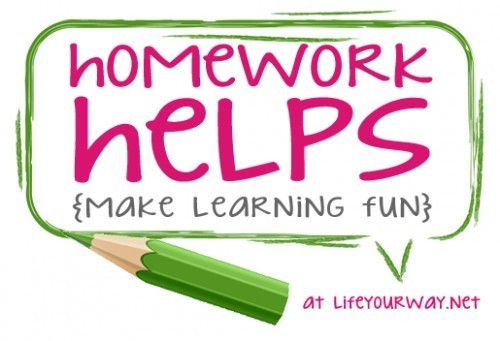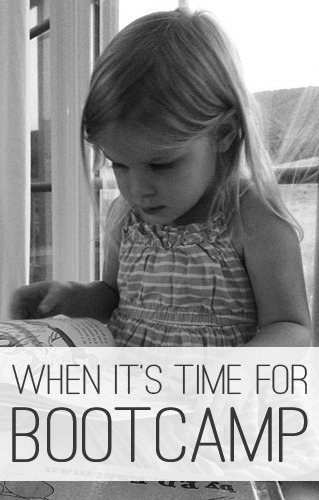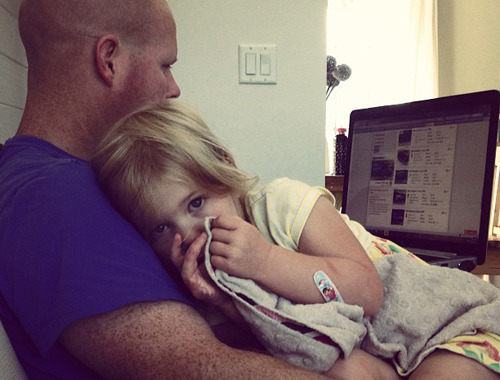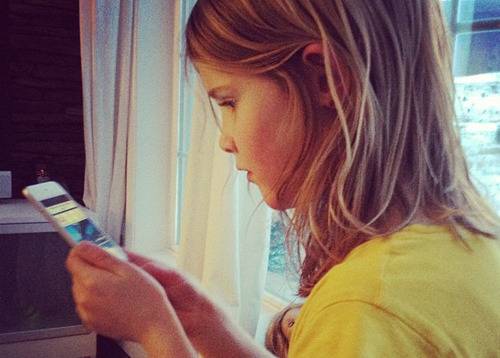Mandi Ehman's Blog, page 103
July 12, 2013
Classical Conversations Cycle 2 Notebooking Printables

You know how I said I was done talking about homeschooling for the summer? I lied; I’m sorry!
One thing I hadn’t yet nailed down was exactly how we were going to incorporate CC science, history, geography and timeline at home. I knew I wanted it to be the center of our curriculum this year, rather than something we do on the side or when we have free time, but I just wasn’t sure what it was going to look like. What I have felt, though, is conviction that we need to scale back the amount of busy work we’re doing to make time for this while still protecting the girls’ ample free time during the day.
I’ve spent the last couple of weeks reading and researching and thinking through different ideas, and here’s what I’ve come up with so far. I’ve packaged these into one download for your convenience, but please know that I put these together with our family in mind rather than for a broader audience, so I encourage you to check out other printables available (I’ve included a list of resources at the end of the post) and figure out what works best for your family. You’ll also want to read through this post to understand how we’re using the various printables I’ve included.
History

As I’ve mentioned, one of the things we’ve been focusing on this summer (and will continue in the new school year) is basic research skills — using an index, looking things up in books and encyclopedias, etc. As part of that, our history notebooking approach will be two-pronged:
First, we’ll copy each week’s history sentence and illustrate it (pulling from our Draw and Write Through History books whenever applicable).
Then, using the 5 W’s sheet, we’ll identify the who, what, where, when and why of the sentence. The why is a bit dialectic, so I’m not going to worry about getting too in depth with that one, and I left off how altogether for the same reason.
As a side note, we’re also going to memorize Rudyard Kipling’s I Keep Six Honest Serving Men poem, which begins with “I keep six honest serving-men / (They taught me all I knew); / Their names are What and Why and When / And How and Where and Who,” so I am including a copy of that for their notebooks as well (and it’s included in the notebooking pack for you too!).
Science

Our approach for science will basically be the same — copying the sentence for the week and drawing an illustration.
One of the benefits of a CC community is the built-in science and art projects each week so that you, as a parent, don’t have to do those at home. I had originally planned to replicate the CC experiments at home (and we will still be doing fine arts), but I’ve decided to wait until spring to try to add those. I’d rather them miss out on 12 weeks of science experiments than have us end up overwhelmed and ineffective in all areas because we’re trying to do too much!
Geography

Our approach to geography will be two-pronged as well:
We plan to follow the approach outlined in The Core to practice tracing, copying and drawing various maps. We’ll start with the world map and focus on the placement of the continent blobs in relation to the various lines of latitude, and then move on to Europe (where the bulk of this year’s geography is located) and work on mastering the continent outline freehand. We may or may not worry about country outlines depending on how it goes.
The second part of our approach will be identifying the weekly geography locations on a printed outline map using a numbered list. I’m going to have the girls write the weekly locations on the list and then add the corresponding numbers to show where they are on the map.
Notes: Because there are many free printable maps already available, I just printed out the maps I need from WorldAtlas.com rather than trying to create my own. I printed both the maps and geography lists on cardstock and then cut off the left margin of the list (at the faint grey line on the printable) so that I can tape the two pages together and have the list fold out beside the map rather than including it behind the map in our binder. Because there are so many European location, the geography lists go up to 75 across three pages, and I’m planning to attach those accordion-style so that we can mark all of the locations on one map.
Bible

The girls are almost finished their Rhythm of Handwriting workbooks from Logic of English (which I love), and to continue practicing our cursive, we’re going to focus on copying this year’s Bible passage from Ephesians 6. Each day they’ll copy the verse of the week in cursive (so 4-5 times per week), which will help them memorize it, work on their copywork skills and practice handwriting.
Unfortunately, because the cursive font I used includes a personal license only, I can’t include our master copy of the verses in cursive here on the site or in our printable download pack. However, if you email me and say something nice, then we’ll be friends, and I’ll be happy to share it with you via email as a friend! The notebooking pack does include the weekly blank copywork sheets.
Timeline

I’ve gone back and forth on what we’ll be doing for timeline multiple times, but here’s what I think we’ve settled on:
We will be adding the timeline card events and history sentences to our timeline, but we’ll be doing it on a smaller scale than last year’s attempt, when we tried to use a big paper timeline to record all of the events from history that we came across in our studies. That didn’t last very long for a number of reasons, one of which was the size and hassle of simply using the timeline (which I’d created on old-fashioned printer paper to create one very long continuous timeline).
This year, I was originally planning to use the printable timeline from Half-a-Hundred Acre Woods, which is formatted horizontally so you can connect several pages together to really visualize the passage of time. However, I’ve come across a few vertical timelines recently, and I decided to try that approach so that the girls can actually write events horizontally next to the correct date. I also condensed ours a bit so that it “only” takes up 26 pages, with the first few millenia each spanning a single page (although I did break 1,000-500 B.C. and 500-0 B.C. into two pages) and then one century per page from 0 A.D. forward. Brandy’s timeline gets as detailed as one decade per page from the 1800s forward, so if you’d prefer that additional space for modern history, be sure to check hers out!
Other
Because the girls have started reading so much this summer, I also created a reading log for them to keep in their notebooks for the books they finish, and that’s included in the notebooking pack as well as a blank handwriting page for history or science sentences that run over the space given on those sheets!
Click here to download the Classical Conversations Cycle 2 notebooking pages.
Other Notebooking Resources
And finally, be sure to check out the notebooking printables available at these various sites as well. Seeing what other people are doing really helped me figure out what we wanted to do this year, and there’s no reason you have to do exactly what someone else is doing rather than piece your own together!
Donna Young’s Notebooking Printables
Half a Hundred Acre Woods CC Notebooking Printables
Wisdom and Righteousness Memory Work Lapbooks
CC Connected File Sharing & Forum
Do you use notebooking pages to reinforce memory work? How do you “do” CC at home?

Mandi Ehman is the blogger behind Life Your Way. She and her husband have four beautiful girls plus one baby boy on the way, and together, they live, work and homeschool on a little slice of heaven in wild, wonderful West Virginia. She loves coffee, chocolate, easy meals, beautiful things and minimalist spaces.
Classical Conversations Cycle 2 Notebooking Printables
© 2010-2013 Purple Martin Press, LLC | All rights reserved

July 11, 2013
Why I Download Files to My Desktop

source: Mandi Ehman
Last week, Lauren talked about 5 ways to clean up your Mac, and while talking about cleaning out your downloads folder, she said, “Ideally your downloads folder is the landing place for all your downloaded files — not your desktop, right?”
Funny enough, while I know popular advice is to use the downloads folder for all of the things you download from the internet, I actually prefer to use my desktop (because I’m a rebel like that!).
Here’s why:
If it’s on my desktop, I can do something with it — file it, use it, trash it — right away rather than just building up a clunky downloads folder that slows my computer down.
Like my kitchen counters, my desktop might get pretty messy during the day, but I always clean it up at night and then I can easily find what I’m looking for because I’ve put it in the correct folder and deleted all the trash.
I’m also less likely to let the clutter build when it’s on my desktop than I am when it’s hidden away in the downloads folder (kind of like a junk drawer in the kitchen!).
And, because my desktop is in plain view, I’m less likely to forget about something that I downloaded, which my ADD-like brain might do otherwise.
Now, in fairness, Lauren pointed out that Macs actually assign resources differently than PCs, and having a lot of files on your Mac desktop can impact the performance of your computer, so if you’re strapped for resources or dealing with a slow machine, you might want to keep your desktop clear at all costs. For me, though, keeping my downloads on my desktop forces me to deal with them (because I like having a clear desktop), which actually keeps my computer running better!
Want to try it for yourself? Here’s how to change your default download folder in various browsers:
Firefox
On the Tools menu, select Options. The download folder settings are on the General tab (which should come up by default). Select the radio button next to Save files to and then click the Browse… button to select your desktop as the download destination.
Chrome
Click on the Options menu icon on the far right of the screen (three horizontal lines) and select Settings. Click Show Advanced Settings and scroll down to the Downloads section. Next to Download location click on Change… and select your desktop as the download location.
Internet Explorer
Click the gear icon on the far right of your screen and select View downloads (or hit ctrl+J while your browser is open). Click the Options link in the bottom left-hand corner. Then click Browse… and select the desktop as your default download location.
Safari
Click the gear icon on the far right of your screen and select Preferences. On the General tab, look for the Save downloaded files to: option and select Other… from the list. Then select the desktop to set it as your download destination.
Do you have a default folder for your downloads, or do you select the location each time you download a file from the internet? If you use a default folder, do you prefer a dedicated downloads folder or your desktop?

Mandi Ehman is the blogger behind Life Your Way. She and her husband have four beautiful girls plus one baby boy on the way, and together, they live, work and homeschool on a little slice of heaven in wild, wonderful West Virginia. She loves coffee, chocolate, easy meals, beautiful things and minimalist spaces.
Why I Download Files to My Desktop
© 2010-2013 Purple Martin Press, LLC | All rights reserved

Let’s Get Moving: 8 Tips for Simplifying Your Next Move
The following post is from Lisa of The Pennington Point:

source: Lisa
Lately I have moving on the brain since we’ve been helping my parents downsize to a much smaller home. It’s such a difficult thing to do….pack up everything you own into a pod or storage room to carry hundreds of miles away to the next location.
It’s emotionally draining and physically difficult, so I thought I’d share some tips on how we made it a little easier.
1. Make lists.
There’s nothing like a good old fashioned list to help you get everything out of your brain. The amount of little things to do is overwhelming. So make as many lists as you need and use just plain paper and pencil (instead of on your phone) so everyone that is helping can see the list too.
Hint: Print out this moving checklist to help you get started!
2. Cull.
Look at your possessions with an open mind. If you haven’t used it in over a year, no matter how much you love it, let it go! I have a general rule that I set aside one large box for those types of things, and that’s all I can keep. If it won’t fit in the box, I get rid of it. It can be hard to do, but once it’s gone you’ll be glad.
3. Get organized.
I like to go room by room. Once the drawers and closets are cleaned out, I evaluate the furniture in each room and decide how it will be packed for travel. I then designate different parts of the house for each method (moving truck items in the dining room, pod items in the living room, etc) and I start sorting. Once a room is empty I close the door. Done. Slowly but surely it all begins to come together.
4. Have plenty of supplies.
No matter what kinds of boxes you are using, have everything you need to fill them. Packing tape (and a few extra rolls), markers, bubble wrap, old towels, newspaper, etc are all necessary for a smooth move. You’ll need lots more than you think.
5. Make daily goals.
In the case of my parents’ move, I was going to be at their house helping them for 4 days, so I made a goal for each day. For example, day 1 was for emptying out all closets, drawers and cabinets and either throwing it out or boxing it up. Day 2 was for loading the pod (that was going into storage). Day 3 was for dealing with trash, taking what they didn’t want to the donation center and emptying out all of the rooms. Day 4 was for loading the truck. That helped us stay on track and not just wander around not knowing what to do.
6. Make every space count.
Don’t put an empty dresser into the moving truck. Use those drawers to carry a lamp (well wrapped, of course) or some artificial plants. They won’t weight the dresser down and they won’t take up extra room, win-win. When you put your sofa on the truck, slide flat things under it. Under tables and inside vases are also often forgotten places also.
7. Entertain the kids.
For the littler ones that couldn’t really help, I had some new toys for them to play with. Once we emptied out the first room I put all of their toys in there and it gave them a whole place to play where they wouldn’t be under foot. I’d make sure they had snacks and treats to make them feel special, but they were told not to interrupt the moving workers unless absolutely necessary.
As an added note, if you have really little ones or a baby, sometimes it’s better if you can stay out of the way. Maybe you can offer to watch someone else’s children while they help pack so the babies aren’t around during a move. Or hire an older child to watch them in the empty room so you can get more work done.
8. Ask for help.
Don’t be shy. People don’t usually mind helping if you ask for just a few hours of their time. Be sure to have snacks and cold drinks on hand for your helpers and be ready when they get there so their time isn’t wasted.
While moving is very stressful, using some of these tips has kept us from feeling too overwhelmed by the process. Remember, soon you’ll be in your new place and this will be a distant memory.
Do you have any good moving tips?

Lisa winds through her little Texas farm house every night, tucking in her nine homeschooled children and turning off lights. Then she scans the rooms & makes a mental list of what she wants to rearrange, restore or paint. Her husband of 25 years hangs on for the ride while she blogs about it over at The Pennington Point.
Let’s Get Moving: 8 Tips for Simplifying Your Next Move
© 2010-2013 Purple Martin Press, LLC | All rights reserved

July 10, 2013
10 Steps to Avoid Organizing Overwhelm
The following post is from Laura of I’m an Organizing Junkie:

image credit: Maigh
There are some great posts in the archives that don’t get much attention anymore, and this one from Laura is one of my favorites. If you’ve ever dealt with organizing overwhelm, be sure to read through Laura’s step-by-step process!
One of the most common organizing questions I get is, “I’m so overwhelmed with all my stuff. Where do I start?”
I know how easy it is to be discouraged by all we have to do that we simply drag our feet and do nothing. We look around at our spaces and think, “I’m never going to get to the end.” It’s frustrating and draining when the task ahead seems to be more than we can handle.
Here are some steps to encourage and support you with avoiding the dreaded organizing overwhelm:
1. Once you decide that you are ready to make a change, create a list of all the areas of your home you want to organize. Take a walk around your house and get it ALL down on paper.
2. Now break areas down into tasks that will fit short periods of time that you can manage easily. For instance if in step one you listed you wanted to organize your sewing room, go one step further and break that task down into manageable steps (ie: sort fabric into colors, purge 10 things, consolidate sewing accessories, etc..)

image credit: hello-julie
3. Determine how many tasks you can tackle a day based on the time periods set in step two. For instance if you broke tasks down into 15 minute increments perhaps you can accomplish two a day. Set a goal, but don’t set yourself up for failure.
4. Start with the area that gives you the most stress. If you use a certain cupboard every single day and every single day when you open that cupboard door something falls out on you, start there.
5. Don’t jump from area to area. Finish all the tasks associated with one area before moving to the next. Savor the victory of completion, and this will provide the motivation you need to continue.
6. Along with a garbage bag, keep three boxes or baskets handy: one for items that need to go somewhere else in the house, one for donation elsewhere, and one for items that need to be actioned (ie: to repair, returned, etc)
7. Don’t complicate matters by running out and buying new containers before you really know what it is you need to containerize. Consolidate and purge items first.

image credit: snowpeak
8. Exercise your decision making skills. If you haven’t used something in a year or don’t love it, don’t keep it. The more you part with, the less you have to find a home for.
9. Ask a friend to help. A fresh set of eyes on your space is often the clarity you need to get unstuck. Another option is to hire a Professional Organizer to assist and support your endeavors. Prices vary from place to place. Visit these national organizations for further information.
Canada: POC
USA: NAPO
10. Take it one day at a time and don’t look up!
For more information on how to break down tasks into manageable portions, check out my 52 Weeks of Organizing series.
Which step do you think would have the most impact on you?

Laura is a wife and mother to three great kids, lives in Alberta, Canada and is an addict of all things organizing. You can find her blogging regularly at I’m an Organizing Junkie, and her organizing book, Clutter Rehab: 101 Organizing Tips & Tricks to Become an Organization Junkie and Love It!, is in stores now!
10 Steps to Avoid Organizing Overwhelm
© 2010-2013 Purple Martin Press, LLC | All rights reserved

Help Your Child Get the Most Out of Their Summer Reading Assignments
The following post is from Jennifer, a lifelong educator:

See all of the Homework Helps posts here.
Many schools require students to read extensively during their break. It’s one thing to move your eyes over the words on each page, and quite another to really grasp the deeper meanings in a book.
No matter what age your student is, applying these strategies will help improve their comprehension and actually enjoy the book more:

source: Jennifer Burke
Set a Purpose for Reading
Knowing why you are reading helps to focus your attention. Help your kids decide if they are reading to learn more about a period in history, to get to know something about particular characters, or to learn facts that will be needed in the upcoming school year.
Make Connections
You’ll always remember more if you connect your new knowledge to previous experiences. There are three basic types:
Text to Text: what does this book remind me of in something else I’ve read?
Text to Self: what does this remind me of in my own life?
Text to World: what event or situation does this remind me of?
Stop and Think
Figuring out what the author really meant takes thought. Encourage your student to pause at the end of a page or section and ask themselves questions, such as “What just happened?” “Why did that happen?” “Why is that important enough for the author to include it in this book?”
Record Your Thoughts: If you can, write in the book. If not, use sticky notes. Recording your thoughts on paper increases retention. If a particular section of the book makes your child laugh, have them write a smiley face by that part and share it with you later. If there’s an event that seems especially important to the plot, highlight in some way. Getting involved with more than your eyes increases your memory power!
Make Predictions: Trying to figure out what happens next pushes a reader to tie pieces of the story together. In looking ahead, readers start to think about what has already happened in the story, thus increasing understanding.
Write a Quick Summary: Teachers require students to write after reading because it works. Have your child record their thoughts at the end of each chapter. They’ll be amazed at how much more they remember.
As a Parent, Read the Book, Too!
Book clubs work because good readers love to share their thoughts. Offer your kids the same opportunity by reading their assigned novels and discussing them. This makes the book less of an assignment and more of an experience! (As a plus, this communicates love and care to your child – something they will long remember. It also gives you more insight into your child’s abilities, thoughts, and dreams. Sounds like a win-win to me!)
Are your kids motivated to read during the summer or do they drag their feet! What helps you get them interested in a good book?

Jennifer is passionate about children and education. She homeschooled her two sons for five years, established and directed a Christian school in Maryland for 20 years, and currently teaches in a public school in a Chicago suburb. She loves investing in relationships and delights in every moment that she spends with her family.
Help Your Child Get the Most Out of Their Summer Reading Assignments
© 2010-2013 Purple Martin Press, LLC | All rights reserved

July 9, 2013
5 Ways to Simplify Your Menu Planning Process

source: trenttsd
Menu planning is one of the habits that makes the biggest difference in our family’s budget and my stress level. By taking a few minutes each week to plan out our menu and create a shopping list, I avoid buying food that we don’t need and won’t eat and eliminate the whole “standing in front of the open fridge wondering what to make” stress.
Yes, that’s right — I menu plan in just a few minutes each week with Plan to Eat, and I’ve partnered with them this month to bring you meal plannings tips and strategies!
Today I’m sharing the 5 strategies I use to simplify my meal planning process:
1. Be realistic.
The most important menu planning tip I can offer is this: be realistic about the recipes you really want to make and will have the time to deal with!
It’s tempting to create a beautiful meal plan full of gourmet meals and tasty side dishes, but realistically I know there will be at least one night where I don’t feel like cooking at all, and when we have a busy week planned, I tend to stick with super simple one-dish wonders that are easy to throw together.
While menu planning makes it easier to stick to food resolutions such as cooking from scratch or avoiding certain ingredients, it’s still important to be realistic and not just make a menu plan that you think you should make if you’re not really going to stick to it.
2. Organize your recipes.
My biggest menu planning struggle has always been sorting through all of the recipes in my head, in cookbooks, torn from magazines and saved in my browser bookmarks to decide what to make each week! Sound familiar?
For paper planning: What I should have done when I was planning on paper was taken the time to really organize those recipes in a binder or accordion file — printing recipes as I came across them and maybe even copying them out of cookbooks — to have them all in one place, organized by category for easy reference.
How Plan to Eat helps: What I do now is actually a two-step process. I save tons of recipes on Pinterest that I’ll probably never make, but I try to pick a few new ones to try each week. Once I’ve decided what we’re going to try for the week, I use the Plan to Eat bookmarklet to quickly add it to my account so that I can add them to my menu plan.
Already in Plan to Eat are all of our family’s favorite recipes, and those are categorized by course and tagged with things like “crockpot” or “gluten-free” to make them easy to sort through as my recipe box continues to grow.
3. Create a meal rotation.
That said, because all of my menu plans tend to be on the simpler side, I look for ways to rotate and repeat menu plans as much as possible.That means that our family follows basically the same breakfast and lunch menu every week. Other families create rotating 2-week or 6-week menu plans for dinner that they can repeat again and again, while still others follow a weekly rhythm so they know there will be one Mexican dish, one casserole, one Italian dish, etc. on the calendar each week.
Not to sound like a broken record, but the key here is figuring out what works for you!
For paper planning: To easily rotate or repeat your menu, be sure to use a notebook or file folder to save past menu plans so that you can refer back to them.
How Plan to Eat helps: Click the Edit Planner button in the top left corner of the calendar to copy, move, swap or delete your menu plan from one week to the next. You can even choose to just do one section at a time if you’d rather not repeat all three meals!
4. Plan for all three meals + snacks.
Which brings me to my next tip: While I know a lot of people (most people?) only really plan out their dinner dishes, we actually plan all three meals plus snacks each week. We don’t always stick to the plan exactly, but it ensures that we always have the ingredients on hand for those meals and gives us a list to choose from each day.
5. Share the menu plan with your family.
And finally, because my husband and I share cooking responsibilities, I love that Plan to Eat can sync with Google Calendar so we both have access to it without logging in. It also makes it easy to see the meals we have planned alongside any appointments we have scheduled!
For paper planning: Display the menu plan somewhere where the whole family can refer to it throughout the week.
How Plan to Eat helps: When viewing your Planner, click the gear icon on the far right of the screen. Copy the iCal feed URL and add it into your calendar software to import the calendar. (On Google Calendar, click the arrow next to Other Calendars and select Add by URL.)
Free 30-Day Trial
If you’ve never tried Plan to Eat, I encourage you to sign up for a FREE 30-day trial. You’ll also gain access to almost 50,000 recipes from fellow Life Your Way readers to spice up your menu plan!
Do you meal plan? What’s your best menu planning tip?

Mandi Ehman is the blogger behind Life Your Way. She and her husband have four beautiful girls plus one baby boy on the way, and together, they live, work and homeschool on a little slice of heaven in wild, wonderful West Virginia. She loves coffee, chocolate, easy meals, beautiful things and minimalist spaces.
5 Ways to Simplify Your Menu Planning Process
© 2010-2013 Purple Martin Press, LLC | All rights reserved

When It’s Time for Bootcamp

source: Mandi Ehman
Every so often, we’ll notice a particular behavior getting out of control with one (or all) of our girls and declare that it’s time for “bootcamp” — a period of time where we focus on that behavior with quick, clear consequences.
For us, bootcamp isn’t about being harsh (no scream-in-your-face drill sergeants here!), but about being hyper-consistent to break the bad habits that we’ve fallen into. In fact, it often results in less yelling and frustration for all of us since we’re upfront with the girls about the expectations and consistent in enforcing them!
Recently, we realized that it was beyond time for our youngest daughter’s first bootcamp experience.
First, let me back up:
Our sweet girl had a bit of a rough start. Although she was born perfectly healthy and happy, I distinctly remember the day she woke up, at less than a week old, and realized she was no longer in my womb. Needless to say, she was not happy about that.
With mild reflux and fairly severe colic (both of which were definitely made worse by dairy, coffee and coffee) and an easily overstimulated personality, she spent most of her first year unhappy. Truly, while we got some pretty precious giggles out of her at home, most of our extended family had to wait until she was much older to see the parts of her personality we loved.
Things got somewhat better once she weaned, but she still wasn’t sleeping through the night, and at about 18 months old, she began screaming hysterically for no apparent reason. {As a side note, I know for many people this describes their experiences after routine vaccines and a subsequent autism diagnosis, but for us there was no correlation.}
After about a week of screaming and sleepless nights, I began to wonder if her reflux could be acting up again. That night my husband ran down to the local gas station for some Tums, and sure enough, half a Tums settled her right down. We headed to the pediatrician the next day for a new Zantac prescription, where she was also diagnosed with an ear infection, which can be caused by reflux in babies and toddlers.
Thankfully, we noticed an immediate difference in her personality, and we began the process of eliminating dairy and gluten from her diet entirely (after a negative allergy test when she was younger, she was already off “obvious” sources of dairy, but not the hidden dairy found in so many foods). Sure enough, with dairy gone, she began sleeping through the night and her personality blossomed.
Unfortunately, this two-year journey with what we thought was our last baby had left us in a pretty vulnerable position as parents. We had spent so much time coddling her, trying to make her comfortable and trying to figure out what was going on that we hadn’t held her to the same standards of politeness, obedience and behavior that we had our other girls, and she was living up to her nickname, “The Tyrant.”
As we began to think about adding another baby to our family, we realized that it would be even more important to break some of these bad habits she had developed and to start correcting some of our mistakes.

source: Mandi Ehman
This time, bootcamp wasn’t as much about her (although it definitely wasn’t a pleasant experience from her perspective as we started enforcing rules that we had been ignoring), as it was about retraining ourselves to be consistent with her. This was especially difficult in the face of her extremely strong personality given that she’d pretty much gotten her way for three years, and there were plenty of times when it would have been so much easier to just give in!
Instead, we committed to enforcing the rules — teaching her to come when called, waiting for her to nicely ask for something before doing it and reminding her to say thank you, moving her to her crib when she threw temper tantrums.
It’s been about six months since we came to this realization and really started changing our approach with her, and while it has been hard at times, I am in awe of the sweet (still strong willed) little girl who is emerging. She is demanding things less and less, instead asking us nicely for things with “please” and “thank you”, and I think it’s safe to say that the issues we do have with her are typical of three-year-olds and not evidence of her lack of discipline.
I’m sure there will be times when we have to revisit bootcamp with her and her sisters, but for now I think it’s safe to say we’ve graduated!
Do you use the bootcamp approach to discipline issues in your home?

Mandi Ehman is the blogger behind Life Your Way. She and her husband have four beautiful girls plus one baby boy on the way, and together, they live, work and homeschool on a little slice of heaven in wild, wonderful West Virginia. She loves coffee, chocolate, easy meals, beautiful things and minimalist spaces.
When It’s Time for Bootcamp
© 2010-2013 Purple Martin Press, LLC | All rights reserved

July 8, 2013
Weekly Reads + Seasons for Reading {7/8/13}

I feel like I’ve finally gotten back into my reading groove!
I finished Ten Ways to Destroy the Imagination of Your Child this week (although, truthfully, I wanted to give up because it was a somewhat tedious read!) and also read Pride & Prejudice (more on that one below), and I’m enjoying finding snippets of time here and there for reading even on busy days! We’ll see what my reading schedule looks like once the new baby arrives because I’ve never loved reading and nursing at the same time, but for now I’m just enjoying it while I can.
We also want to know what you’re reading! Add your blog post to the linky below or leave a comment with your favorite reads from this week.
This Week’s Reads

Pride & Prejudice by Jane Austen
I wasn’t sure I would make it through Pride & Prejudice this week because I didn’t get started until midweek, but I actually found this a much easier, quicker read than Sense & Sensibility — whether because of the book itself or because I’ve gotten better at reading Austen’s style, I’m not sure! Either way, I really enjoyed this one, and I especially loved Mr. Bennet and his dry sense of humor.
On My Reading List for This Week
I’ve been hesitant to share my reading list because I was doing such a bad job of sticking with it for a while there, but this week I’m planning to read:
Lost Child in the Woods by Richard Louv
Mansfield Park by Jane Austen (because it’s next in the collection I bought for my Kindle!)
With the Girls
In addition to the big girls’ individual book choices (which included Mrs. Piggle Wiggle, Usborne Greek Myths and The Amazing Abby Hayes: Now You See It, Now You Don’t), the girls and I read through our Virginia Lee Burton collection again. The Little House is my absolute favorite story (it makes me wish I could pick up my grandma’s house and move it out to our land because I loved that little house so much!), and we also enjoyed Maybelle the Cable Car, Katy and the Big Snow and Mike Mulligan and His Steam Shovel. I’d also picked up Choo Choo a few months ago, so we enjoyed reading that one together for the first time!
A Question for You
How do your reading habits change during different seasons of the year and of life? When do you find it the easiest to make time for reading — during the lazy days of summer or the dark evenings of winter? Do you read more or less when there’s a baby in the house?
Share Your Reading List
On Kids and Social Media

source: Mandi Ehman
To be honest, I’m not exactly sure what the point of this post is. I’m not offering advice or really even sharing a story; mostly, I’m just trying to process my own thoughts and hear yours as well!
Let me start by saying that I’ve been a mom long enough to know that I know nothing about raising adolescents or teens. The one thing I do know is that, when the time comes, I likely won’t parent them the way I think I will from where I sit today.
That said, a lot of our girls’ friends (10-12 year olds) are starting to join social media sites like Facebook and Instagram, so I’ve been thinking about social media and what our approach will be over the next few years a lot lately.
Another thing I do know for sure is that — unless the law changes — our children will not be joining social media sites until they’re 13, as required by law. I know many people disagree with this somewhat arbitrary age requirement and believe that they as parents should be able to make that decision, but I just can’t bring myself to enable my kids to break the law in such a blatant manner (and to be clear, to join any of these sites, your child has to lie about their age, so it’s not exactly a grey area). That’s just not a precedent I want to establish.
But we’ve been resisting the kid-friendly gaming and social sites as well, and I’m not sure we’re going to change our mind on that any time soon either.
Because our girls are homeschooled, I actually think technology is a great way to enable interaction with their friends throughout the week, but I still find myself hesitant to really let them jump in with both feet…or even dip their toes in.
There are a few reasons I feel this way:
1. It is much easier to introduce them to technology later than it is to pull them back once they’ve already started.
2. We are really enjoying the benefits of our established 20-minutes-a-day of electronics time and all of the extra time it gives them for reading, imaginative play, etc.
3. I’d rather them use things like the ol’ fashioned telephone and letter writing or even FaceTime and emails sent from my account to interact with friends rather than instant messaging or static posts on a social media site.
4. Perhaps the biggest reason, though — which relates to #1 — is I have some pretty big concerns about teens and social media in general, and we’re not ready to introduce them to that world until we can come to peace with how we will manage and monitor that later on.
For example, the teen culture on Instagram is pretty fascinating to behold and somewhat scary, honestly. Most of the teens I know have hundreds of random followers (and there are even teen accounts with hundreds of thousands of followers). In fact, many teens caption their photos solely in hashtags for the purpose of getting more followers, and beyond the obvious concerns about inappropriate sharing, racy photos and being addicted to social media, the popularity contest aspect of it worries me.
I know how hard it is for me not to get caught up in likes and comments on my photos and posts, and I don’t necessarily want my girls to start worrying about that in the midst of developing their self-confidence!
On the other hand, there are teens like imhannahnicole (Rachel from Finding Joy’s daughter) who are posting gorgeous photos, poignant thoughts and more and using Instagram to display their art and talent in a way that seems really healthy to me, so I’m not opposed to social media altogether. Instead, I’m just trying to figure out how you establish those healthy habits, and my gut feeling is that it doesn’t happen through early exposure but through holding off until they’re really able to handle it in a healthy way.
But I’m trying to avoid the forbidden fruit phenomenon as well, so I think it’s a delicate balance!
Now it’s your turn: How do you feel about kids and social media? Do your preteens use social media sites despite minimum age requirements? What rules will you establish for social media and teens?

Mandi Ehman is the blogger behind Life Your Way. She and her husband have four beautiful girls plus one baby boy on the way, and together, they live, work and homeschool on a little slice of heaven in wild, wonderful West Virginia. She loves coffee, chocolate, easy meals, beautiful things and minimalist spaces.
On Kids and Social Media
© 2010-2013 Purple Martin Press, LLC | All rights reserved

Take Your Writing to the Next Level with This Week’s Bundle! {BundleoftheWeek.com}
 Are you a writer? Do you want to be a writer? If so, this bundle is for you! With five incredible resources from well known and successful authors, this collection is packed full of inspiration, practical tips and strategies to help you take your writing to the next level and earn an income from your craft.
Are you a writer? Do you want to be a writer? If so, this bundle is for you! With five incredible resources from well known and successful authors, this collection is packed full of inspiration, practical tips and strategies to help you take your writing to the next level and earn an income from your craft.
Get this bundle for 70% off this week only!
With your purchase, you’ll get all five of the following ebooks:
You Are a Writer by Jeff Goins
Self-Publish by Erin Ulrich and Teri Lynne Underwood
31 Days to Become a Better Writer by Kristina J. Tanner
How to Market and Sell Your eBook by Sarah Mae
On Becoming a Writer by Denise J. Hughes
Even if you’re not interested in this week’s bundle, be sure to sign up for the BundleoftheWeek.com weekly newsletter so you can be the first to know about the latest bundle:
Take Your Writing to the Next Level with This Week’s Bundle! {BundleoftheWeek.com}
© 2010-2013 Purple Martin Press, LLC | All rights reserved




